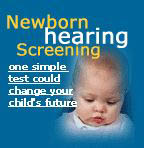 |
 |
It’s an epidemic, and it’s all around us. It’s in our bedrooms, in our rec rooms and living rooms, in our cars and even in our baby’s crib. It causes stress, isolation, sleep deprivation and increases our blood pressure. And it is literally making us deaf.
What is this monster? It’s noise. Noise is responsible for more than one-third of all cases of hearing loss, a life-altering disability that is eminently preventable. Hearing loss is Canada’s third leading chronic disability, affecting more than 3 million people — and the leading cause is noise, responsible for more than one third of cases.
According to a recently published study conducted by Timothy C. Hain, a Professor of Neurology and Otolaryngology at Northwestern University Medical School in Chicago, Illinois …
We are steadily losing our hearing due to over-exposure to noise at an earlier age than ever before. The number of people with hearing loss who are between the ages 18 and 44 increased 17 per cent. The greatest loss in hearing is found in people 45 to 64 — 20 years younger than expected and the reason: over exposure to noise.
Children are also feeling the effects of living in a noisier world and are especially vulnerable. According to the study, 15% of school children have hearing loss, increasing to 30% in young adults entering the work force.
In this month’s issue of Utne Magazine, writer David Schimke explores our quest for the creative and natural soundscape all around us — the music of nature, the laughter of friends and neighbours, and our own inner voice.
I didn’t know that cheaper housing was statistically linked to mind-numbing noise pollution: that city planners insensitive to the needs of lower-middle-class citizens typically build two-lane highways through neighbourhoods designed for the horse and buggy, or that airport runways literally begin and end in people’s backyards. When I first moved to the city, I didn’t expect that construction crews and street sweepers would rattle and hum before sunup, while schoolchildren and working families tried in vain to rest.
According to the U.S. 2001 Census Survey, 11.6 million households reported that street or traffic noise was bothersome, and an additional 4.5 million said it was so bad they wanted to move.
Schimke reports that there are 40 million cases of hearing loss in the United States, with 10 million cases attributable to excess noise. Besides contributing to deafness, at just 85 decibels (a human voice averages 65 decibels, while a hair dryer clocks in at 95), high sound levels lead to stress (the human pain threshold is 120 decibels), indigestion, high blood pressure, weakening of the immune system, and hypertension.
The relationship between noise and the natural soundscape is similar to the relationship between litter and the landscape. We need to get people to understand that, to create a new aural ethic. Dissonance is not inherent in the human condition. Noise induced hearing loss doesn’t have to happen to you. For now, practice safe listening — turn it down and use protection.